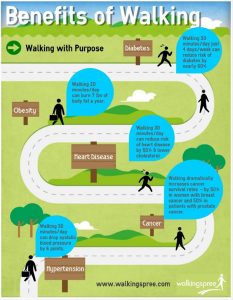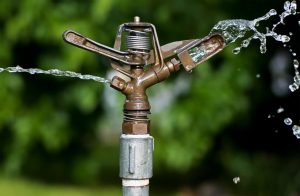 Since 2007, the American Heart Association has been celebrating National Walking Day on the first Wednesday in April. This year, it falls on April Fool’s Day, and while some pranksters will be affixing rubber bands to the kitchen faucet spray nozzle or staging fake spilled coffee in the break room, many individuals and corporations will be getting their smiles in a different way: walking.
Since 2007, the American Heart Association has been celebrating National Walking Day on the first Wednesday in April. This year, it falls on April Fool’s Day, and while some pranksters will be affixing rubber bands to the kitchen faucet spray nozzle or staging fake spilled coffee in the break room, many individuals and corporations will be getting their smiles in a different way: walking.
Tata & Howard team members will be participating in National Walking Day for a myriad of reasons. A sedentary lifestyle has been shown to be as detrimental to one’s health as smoking, so finding ways to sneak in bouts of movement or exercise during the day has become a goal for many corporations. Corporate wellness programs very often include walking due to its ease of implementation and host of benefits. Walking is gentle, free, easy, and enjoyable, and people of all ages and abilities are able to participate. Walking just 30 minutes a day strengthens the heart, lowers the risk of diseases such as osteporosis, asthma, heart disease, stroke, diabetes, and some cancers, and it helps people lose or maintain weight. Another lesser-known benefit is that it boosts mood, and has been proven to be as effective in treating mild to moderate depression as anti-depressants.
 At Tata & Howard, corporate wellness is a priority. In addition to issuing corporate walking challenges like the Massachusetts to California virtual walk, employees are supported and encouraged to also make small daily changes to improve health. Rather than emailing or calling, Tata & Howard team members usually walk to their co-workers and managers with questions. Standing desks are sprinkled throughout the office, and many employees can be seen checking their company-subsidized FitBit walker trackers throughout the day. In addition, Tata & Howard has participated in the Special Olympics spring, summer, and fall lunchtime 5Ks as well as the 20-mile Walk for Hunger in Boston, Massachusetts.
At Tata & Howard, corporate wellness is a priority. In addition to issuing corporate walking challenges like the Massachusetts to California virtual walk, employees are supported and encouraged to also make small daily changes to improve health. Rather than emailing or calling, Tata & Howard team members usually walk to their co-workers and managers with questions. Standing desks are sprinkled throughout the office, and many employees can be seen checking their company-subsidized FitBit walker trackers throughout the day. In addition, Tata & Howard has participated in the Special Olympics spring, summer, and fall lunchtime 5Ks as well as the 20-mile Walk for Hunger in Boston, Massachusetts.
This year, on Sunday, May 3, 2015, Tata & Howard will once again be participating in the Walk for Hunger. The event, which starts and ends on Boston Common, includes a scenic route that winds through Boston, Brookline, Newton, Watertown, and Cambridge, past Boston College and Harvard University, and includes entertainment, food stations, and rest areas along the way. Started in 1969, it is the country’s oldest continual pledge walk and the largest one-day fundraiser focused on alleviating hunger. All monies raised go to Project Bread, an organization that provides healthy, nutritious food to those in need in the Commonwealth.

For National Walking Day, Tata & Howard is kicking off a month-long countdown to the Walk for Hunger. All offices will be lacing up their sneakers and taking some time from their day for a walk. Due to this past winter’s record-breaking snowfall in New England, many of us will be doing laps in our office buildings or marching about the parking lot, but we will all have one thing in common: we will be walking — for National Walking Day and to support the hungry. And that’s something we can all smile about.
For more information on National Walking Day, please visit www.heart.org/HEARTORG/GettingHealthy/PhysicalActivity/Walking/National-Walking-Day_UCM_448665_Article.jsp
For more information on the Walk for Hunger, please visit www.projectbread.org/walk-for-hunger











